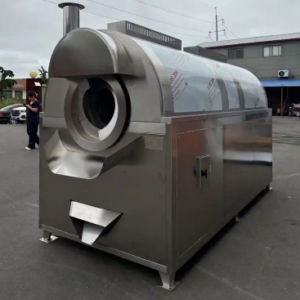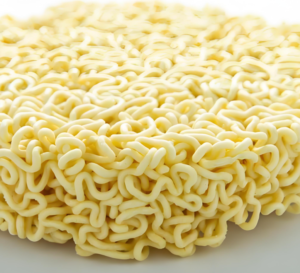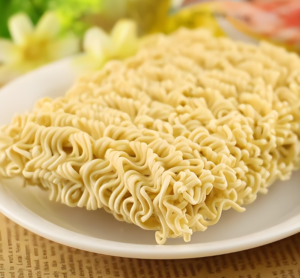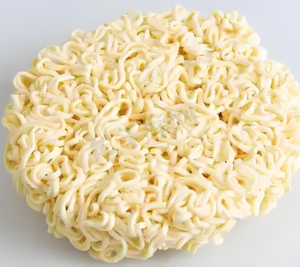<h1>The Production Process of Pringles: Insights for B2B Trade</h1>In the competitive world of snack food manufacturing, Pringles stands out as a global icon. This article explores the intricate production process behind these iconic stacked chips, offering valuable insights for B2B professionals in foreign trade. From ingredient sourcing to final packaging, understanding Pringles’ methods can help suppliers and buyers optimize their supply chains and ensure quality consistency.
kurkure making machine
ToggleThe History and Evolution of Pringles Manufacturing
Pringles, first introduced in 1968 by Procter & Gamble, revolutionized the potato chip industry with its uniform shape and stackable design. Originally developed to address common issues like breakage and staleness, the production process has evolved with technological advancements. For B2B traders, this history highlights the importance of innovation in maintaining market dominance.
Over the decades, Pringles has expanded its global footprint, with manufacturing facilities in key regions like the United States, Europe, and Asia. This strategic distribution allows for efficient export operations, reducing lead times for international buyers and ensuring compliance with diverse regulatory standards.
Key Innovations in Pringles Production
One major innovation is the use of continuous processing lines, which minimize downtime and boost output. B2B partners can leverage this by negotiating contracts that emphasize scalability, helping meet fluctuating global demand.
Modern facilities incorporate automation and AI-driven quality checks, improving efficiency by up to 20%. This not only cuts costs but also enhances product reliability, a critical factor for exporters dealing with stringent international quality norms.
Ingredient Sourcing and Preparation
High-quality ingredients form the foundation of Pringles’ success. The primary component, dehydrated potatoes, is sourced from reliable suppliers in potato-rich regions like Idaho in the USA and parts of Europe. B2B traders should note that sustainable sourcing practices, such as partnerships with certified farms, reduce environmental impact and appeal to eco-conscious buyers.
Other key ingredients include vegetable oils, salt, and flavorings. These are procured through a global supply network to maintain consistency. For instance, oils are selected based on regional preferences, with sunflower oil common in Europe and corn oil in North America, allowing for customized exports.
Quality Control in Sourcing
Suppliers undergo rigorous audits to ensure they meet Pringles’ standards for pesticide levels and nutritional content. This step is vital for B2B professionals, as it minimizes risks in cross-border trade, such as delays from non-compliant shipments.
Preparation begins with milling potatoes into a fine powder, which is then mixed with water and other additives to create a dough. This process is monitored for moisture levels to prevent defects, ensuring the final product meets export-grade specifications.
The Manufacturing Process: Step-by-Step Breakdown
Pringles’ manufacturing involves precision engineering to create the signature saddle-shaped chips. The process starts with extruding the dough through a forming machine, which shapes it into uniform pieces. This step is crucial for B2B efficiency, as it allows for high-volume production that can scale with trade orders.
Frying occurs in controlled oil baths at specific temperatures, typically around 190°C, to achieve the perfect crispiness. Advanced filtration systems remove impurities from the oil, extending its lifespan and reducing waste—a key consideration for sustainable B2B practices.
Flavoring and Seasoning Application
After frying, chips move to a seasoning tumbler where flavors like sour cream and onion or original salt are evenly applied. This uses proprietary blends developed through R&D, ensuring consistency across batches for global markets.
Drying and cooling stages follow to lock in flavors and maintain texture. In B2B contexts, this precision helps exporters meet varying shelf-life requirements, such as those mandated by importers in Asia or the Middle East.
Packaging for Global Distribution
Packaging is a critical phase, with chips stacked into cylindrical tubes to prevent crushing during transit. Materials are chosen for their barrier properties, protecting against moisture and oxygen to extend shelf life up to 14 months.
For B2B trade, customizable packaging options allow partners to add branding or multilingual labels, facilitating easier market entry. Automated lines can produce thousands of tubes per hour, supporting large-scale orders for international wholesalers.
Quality Assurance and Sustainability in Production
Quality assurance is embedded throughout the process, with real-time sensors detecting anomalies like uneven frying or foreign contaminants. This not only ensures product safety but also builds trust in B2B relationships, reducing the likelihood of returns or disputes.
Sustainability efforts include water recycling in processing plants and energy-efficient machinery. For foreign trade professionals, these practices can be a selling point, as many buyers now prioritize eco-friendly suppliers under regulations like the EU’s Green Deal.
Challenges and Solutions in Scaling Production
Scaling for global demand presents challenges, such as maintaining consistency across facilities. Pringles addresses this through standardized protocols and regular cross-site audits, which B2B traders can adopt to streamline their own operations.
Another issue is supply chain disruptions, like those from climate events affecting potato crops. Mitigation strategies include diversified sourcing and inventory buffers, offering lessons for exporters navigating volatile markets.
FAQs on Pringles Production
Below are answers to common questions about Pringles’ production process, tailored for B2B audiences.
What are the main raw materials used in Pringles production?
Pringles primarily uses dehydrated potatoes, vegetable oils, and seasonings. Sourcing from certified suppliers ensures high quality for export purposes.
How does Pringles ensure food safety in manufacturing?
Through HACCP-certified processes, including microbial testing and allergen controls, which are essential for meeting international trade standards.
What technology drives efficiency in Pringles factories?
Automated extrusion and frying lines, powered by AI, reduce human error and increase output, making it ideal for large B2B orders.
How does Pringles handle flavor variations for different markets?
Custom seasoning lines allow for region-specific flavors, helping B2B partners customize products for exports to places like Asia or Latin America.
What sustainability measures are in place?
Initiatives include zero-waste frying oil recycling and renewable energy use, appealing to environmentally conscious trade partners.
The Role of Pringles in Global B2B Trade
In summary, the production process of Pringles exemplifies advanced manufacturing techniques that blend innovation, quality, and sustainability. For B2B professionals in foreign trade, insights into ingredient sourcing, automated processes, and global distribution strategies can enhance competitiveness and foster stronger partnerships. By adopting similar best practices, traders can navigate the snack food industry’s complexities and drive profitable growth.








